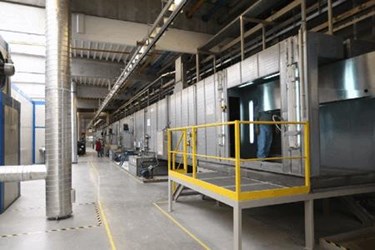Why RO Plants Need Pretreatment

By Divyesh Delawala, Oceanides Global
Reverse osmosis (RO) is today among the most commonly used water purification technologies, in both public and private spheres. RO plant manufacturers supply large municipal bodies as well as smaller communities, and RO plants also have a widespread commercial usage — for example, within the food and beverage industry.
Given their importance in the commercial industry and in ensuring public health, it is essential that we ensure a smooth operation. Unlike other manufacturing processes, the breakdown of a unit is not a simple snag. With its role in public health, such mismanagement can prove catastrophic. For millions depending on the clean water supply from such plants, this could mean days of untreated water that many experts deem toxic. Some of these effects are:
Non-availability of drinking water: Water sources can be extremely polluted, even close to toxic levels. Municipal RO plants are instrumental in ensuring at least a minimum standard of drinking water in urban and rural centers.
Loss of self-dependence: Many small communities like residential complexes have today set up their own RO plants. This is often necessary in overcrowded cities where municipal supplied water is clearly inadequate. A redundant RO plant will be mean the loss of supply that these communities depend on.
Commercial loss: For commercial plants, the stalling of the RO plant has direct financial consequences. It means that production cannot continue as scheduled, and this will affect the production and revenues. This also affects the reputation of the company.
On the other hand, pretreatment can have the following benefits:
Increasing The Life Of The RO Plant
Many plant owners and operators still think that regular maintenance is sufficient to ensure that the plant runs smoothly. However, RO plant manufacturers recommend a proper mechanism for pretreatment. We are often dealing with heavily polluted water that needs extra attention beforehand. Pretreatment lessens the burden on the RO membrane — the most valuable and vulnerable membrane.
Some of the problems faced by an RO plant in the absence of pretreatment are:
Fouling: The feedwater in most RO systems is quite heavily contaminated, with many of the contaminants microscopic. Though not visible, when collected in large quantity, these contaminants can block the RO membrane. This accumulation on the membrane surface is known as fouling. This lowers the permeate flow and causes the pressure to drop. Not only does it drive up the operating costs, it also shortens the life of the membrane.
It is important to note here that fouling is inevitable as contaminants will build up on one side of the membrane. Pretreatment only helps us to slow the process. A simple filtration method is used to minimize the contaminants in the feedwater. This is typically a multimode filter (MMF) or microfiltration (MF) filter. To determine whether you need a similar system in place, test the feedwater.
Scaling: We can all see some kind of scaling wherever water accumulates. When the concentration of inorganic matter in the water increases, it starts precipitating on the RO membrane. This is scaling. It lowers the permeate flows, causes the pressure to drop, and lowers salt rejection. As a result, the RO operation suffers and the quality of the water falls.
Mechanical errors: Some damages can occur because of plumbing errors such as hard start of the feedwater or back-pressure Both of these can damage the membrane. We can rectify this by installing motors with variable frequencies, pressure relief valves, or check valves. These can prevent back-pressure.
Effect of Chemicals: Most RO plant manufacturers today build plants with quite thin membranes. This improves the permeate flow. However, the thin membranes are doubly vulnerable to damage and attack, especially by chemicals like chlorine. These chemicals can burn holes into the membrane, damaging it irrevocably.
These are the four main causes and effects of lack of pretreatment in an RO plant. The other general effects are:
- Shortening of the membrane life
- Higher operating costs
- Poor water quality
In most cases, RO plant manufacturers will offer a complete installation with pretreatment tools and equipment. This can include filtration devices, softeners, antiscalants, and activated carbon. Quite simple and inexpensive, these devices can significantly increase the plant’s life
